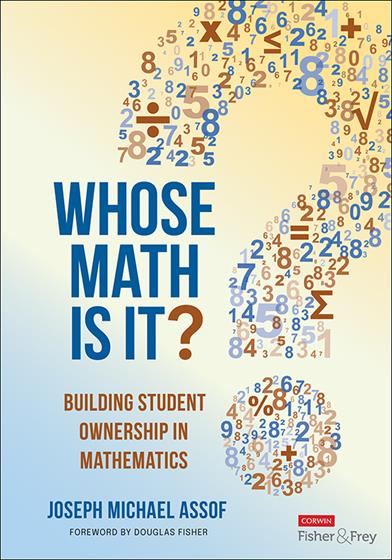Hands-on, Practical Guidance for Educators
From math,
literacy, science, equity, multilingual learners, and SEL, to assessment, school counseling,
and education leadership, our books are research-based and authored by experts
on topics most relevant to what educators are facing today.

Whose Math Is It?
Building Student Ownership in Mathematics
Foreword by Douglas Fisher
Whose Math Is It? provides educators with everything they need to create a classroom environment where students feel empowered to step up and take the lead on their own math learning.
Product Details
- Grade Level: PreK-12
- ISBN: 9781071949511
- Published By: Corwin
- Year: 2024
- Page Count: 152
- Publication date: August 08, 2024
Review Copies
Review copies may be requested by individuals planning to purchase 10 or more copies for a team or considering a book for adoption in a higher ed course. Request review copy


